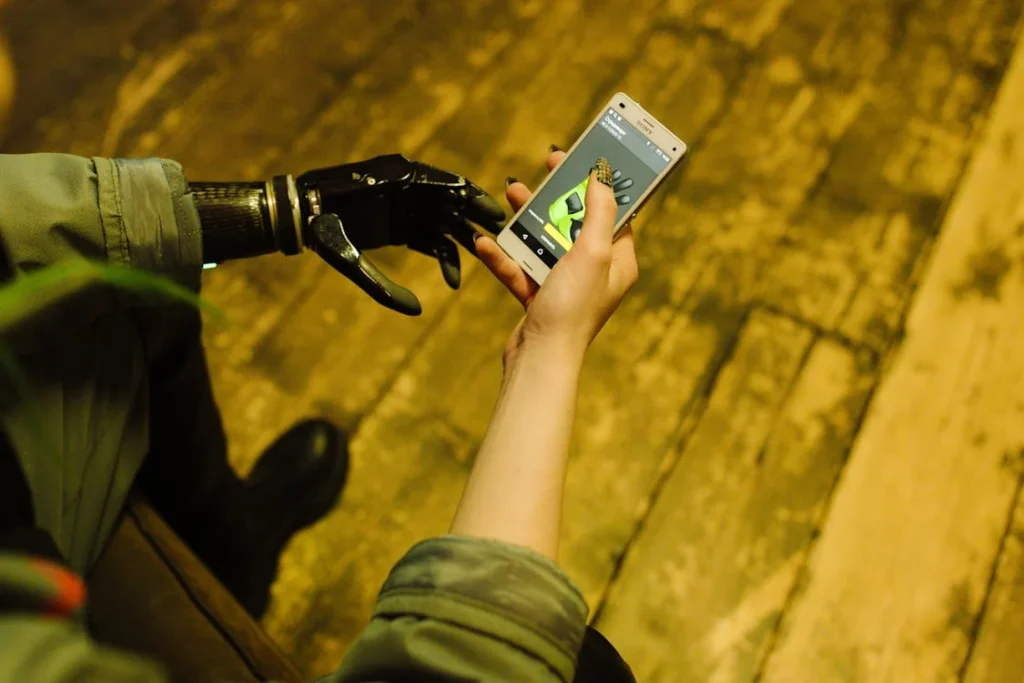Bionic grip technology is more than just a cool phrase. It’s a revolutionary shift in how prosthetic hands work—and how people live. It’s not science fiction. It’s real, it’s happening now, and it’s transforming lives across the world, especially here in India where the need for functional, life-enhancing prosthetics is growing every day. Let’s break down exactly what this technology is, how it works, and why it’s such a game-changer.
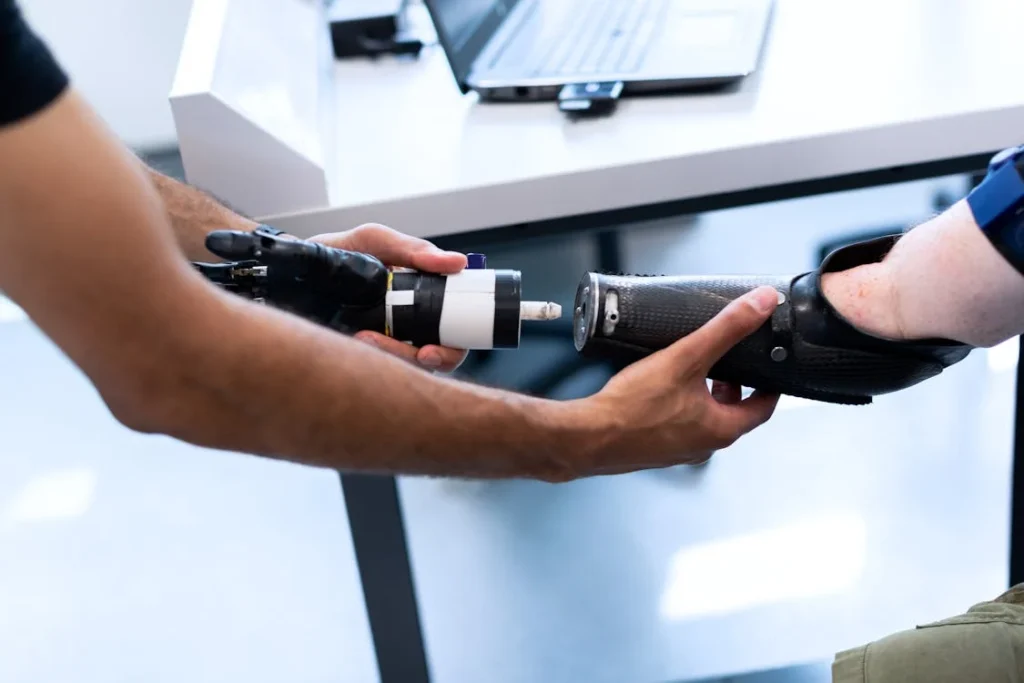
Understanding Bionic Grip: More Than Just a Fancy Name
Bionic grip technology sounds futuristic, but it’s happening right now. It’s not just about metal hands doing cool tricks—it’s about giving people back something deeply human: the ability to grip, hold, and interact with the world.
If you’ve ever picked up a coffee mug without thinking or opened a door while talking, you’ve used the power of your grip. Now, imagine not having that.
For many people living with limb loss, the challenge isn’t just about movement—it’s about reclaiming those small, seamless moments that make daily life feel normal.
At its core, bionic grip technology is a powerful fusion of biology and robotics. It allows a prosthetic hand to move in sync with the user’s body—specifically, their muscle signals.
These aren’t random movements. They’re thoughtful, adaptive actions controlled by intent. You think about picking something up, and the hand does it. That’s what makes bionic grip so extraordinary—it listens to your body and reacts.
This kind of control wasn’t always possible. Older prosthetic hands were either body-powered (using harnesses and cables) or simple mechanical devices that opened and closed in a fixed way.
They were helpful, yes—but limited. They didn’t offer freedom. They didn’t feel natural. Bionic grip changes all of that. It’s the reason why so many users say, “This doesn’t feel like a tool. It feels like my hand.”
The key breakthrough lies in the way bionic prosthetics interpret signals. Muscles still fire off electric impulses even if the hand is gone.
Special sensors placed inside the prosthetic detect these signals and send them to a tiny onboard computer. That computer decodes the message and instructs the fingers to move.
This means a person can gently grip a child’s hand one moment and hold a heavy grocery bag the next—without changing modes or pressing buttons.
The grip adjusts automatically. Some advanced hands even offer tactile feedback through vibrations or resistance, so users know how much pressure they’re applying.
In India, where access to high-tech medical devices has often been limited by cost or availability, this kind of technology opens a new chapter in affordable innovation.
Companies like Robobionics are pushing this boundary by building smart, intuitive bionic limbs that Indian users can access and adapt to with real ease. We’re not just making technology. We’re restoring experiences.
How the Technology Works: From Thought to Action
The Role of Myoelectric Signals
The magic of bionic grip starts with something that’s already inside the human body: myoelectric signals. These are tiny electrical impulses that your brain sends to your muscles when you want to move.
Even after an amputation, many of these signals are still present in the residual limb. Bionic prosthetics are designed to read these signals and translate them into real-world movements.
When you want to grab a pen, your brain tells your forearm muscles to contract. The prosthetic’s sensors detect that contraction, interpret it as a command, and instruct the fingers to close.
The best part? It happens in real-time. The system doesn’t need a keyboard or remote control—it’s all happening from your own thoughts, expressed through muscle movement.
Sensors, Software, and Mechanical Precision
Inside every bionic grip system are highly sensitive sensors, microprocessors, and actuators. The sensors are usually placed on the skin near muscle groups that still respond to movement.
These sensors pick up the electrical signals and send them to a microprocessor (a small computer) embedded in the prosthetic. The microprocessor then makes split-second decisions—should the fingers curl? Should the thumb rotate? Should the hand loosen its grip?
All of this happens in a fraction of a second. You don’t have to wait or consciously think about every step. Over time, many users report that the prosthetic becomes second nature. The feedback loop becomes smoother, and their confidence grows.
Advanced prosthetic hands even come with machine learning software. That means the hand learns how the user moves and adapts. If you grip a bottle often, the hand becomes more precise at doing it.
If you type a lot, it becomes more responsive to smaller finger movements. The system grows with the person.
Battery Life and Durability
Powering all of this tech requires strong batteries, but modern bionic hands are surprisingly efficient. Most run for an entire day on a single charge. That’s because the prosthetic isn’t always “on”—it only activates when it senses muscle signals.
And what about durability? Good bionic grip systems are designed for daily life. They’re water-resistant, dustproof, and made to handle everything from office work to light sports.
At Robobionics, we’ve tested our prosthetic hands in real-life Indian conditions—from the humidity of Mumbai to the dust of Rajasthan.
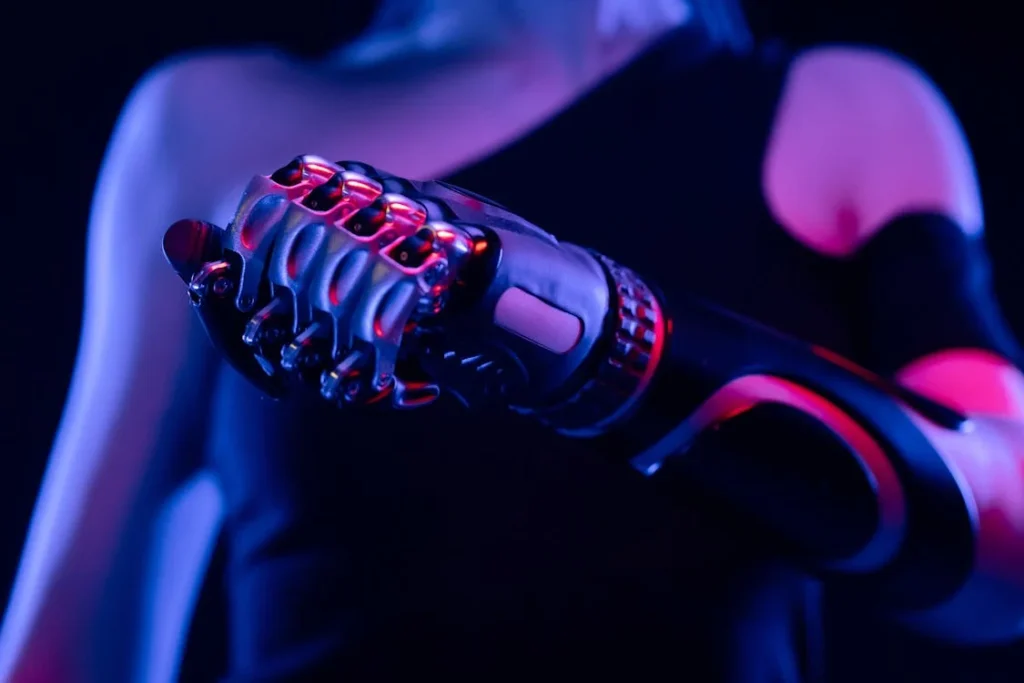
Why It’s a Game-Changer for Amputees in India
Restoring Confidence and Independence
One of the hardest parts of limb loss is not just physical—it’s emotional. People often struggle with a loss of independence, confidence, and dignity. Everyday tasks suddenly become stressful. Social situations feel awkward. It’s easy to feel like you’re being left out. That’s where bionic grip makes a huge difference.
When a person can grip objects with precision again, their world opens up. Cooking, typing, dressing, shaking hands, using a phone—it all becomes easier.
More importantly, it becomes something they can do on their own. No assistance. No second-guessing. That level of independence builds emotional strength.
In India, where family and community play a huge role in daily life, regaining self-reliance has a ripple effect. It allows people to participate fully, whether in family functions, weddings, or festivals. That’s not just convenience. That’s inclusion.
Opportunities for Work and Education
For students and professionals, having access to bionic grip means more than just mobility—it means opportunity. A student can write exams without needing a scribe.
An office worker can type emails or give a presentation without embarrassment. A carpenter can go back to using tools. The door to education and employment doesn’t just open—it stays open.
Robobionics has worked with college students, software engineers, and even manual laborers who’ve returned to work thanks to this technology. These are not rare cases. They’re becoming more common. And that’s what makes this moment so powerful.
What Makes Bionic Grip Different From Regular Prosthetics
Traditional Prosthetics: Useful But Limited
Before bionic grip technology came into the picture, most prosthetics were either passive or mechanical. Passive hands are shaped like a real hand but don’t move.
They serve a cosmetic purpose, helping users look natural, but they don’t restore function. Mechanical or body-powered prosthetics—those that rely on cables and shoulder harnesses—offer more functionality, but they often require unnatural movements to operate.
Think of a body-powered prosthetic. To close the hand, you might have to shrug your shoulder or pull your elbow back in a very specific way. It works, but it’s not intuitive. It’s also tiring. Many users experience fatigue or even pain from trying to use such systems for long periods.
While these types of prosthetics still have a place (especially for people in rural or economically limited settings), they do not offer the flexibility or fine control needed for modern work and social life. They help—but they don’t empower.
The Bionic Advantage
With bionic grip, the control doesn’t come from awkward shoulder movements. It comes from your intention. That’s a massive leap forward.
Imagine how freeing it is to simply think about grabbing your phone and actually doing it, with natural finger movement. The difference is not just mechanical—it’s emotional.
Bionic grip prosthetics often include multi-articulated fingers, which means each finger moves independently. This allows for dozens of different grip patterns: pinch, power grip, tripod grip, and more.
These aren’t pre-set gestures. The hand responds based on how your muscles move. That flexibility makes it useful in almost every daily scenario—from writing to lifting weights.
The other major advantage? Appearance. Most bionic hands are sleek, modern, and have a design that users are proud to show off. In fact, many users say they feel less stigma and more confidence when wearing a bionic limb because it draws admiration instead of sympathy.
At Robobionics, we’ve made it our mission to ensure that our prosthetic hands don’t just work well—they look fantastic. We use lightweight materials, minimalist designs, and finish options that appeal to users of all ages.
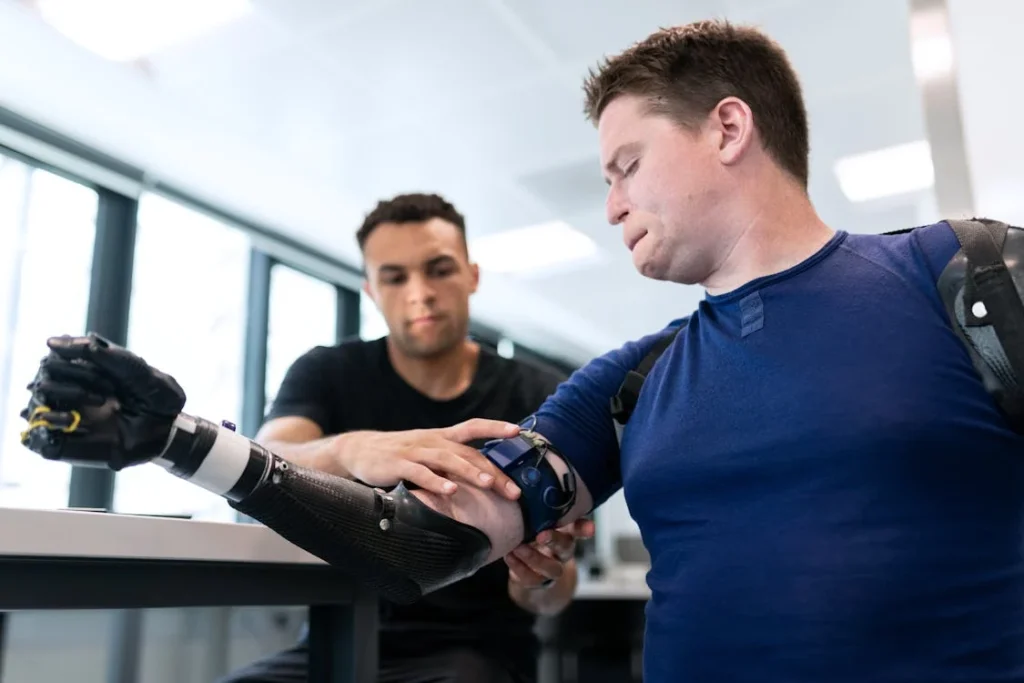
Real-Life Impact: Stories From the Ground
A Glimpse Into Everyday Transformation
We’ve met countless users whose lives have changed because of bionic grip technology. One such user is Ananya, a 23-year-old from Pune who lost her hand in a road accident.
Before she received her bionic prosthetic, she couldn’t imagine going back to her engineering classes, let alone sitting for practical exams. Typing, soldering circuits, writing notes—these all seemed impossible.
But once she got her bionic grip prosthetic, everything changed. Not only could she perform her lab work, but she also became a local advocate for assistive tech.
Her professors didn’t have to make special accommodations anymore. She was just another student, competing on her own terms.
Another user, Rakesh, a tailor from Jaipur, found new life after receiving a multi-grip prosthetic. He customized the grip settings to hold his scissors, grip fabric, and even operate a foot-pedal machine.
At first, it took practice. But within months, he was back in business—literally. His shop reopened, and his income returned.
These aren’t one-off miracles. They’re a direct result of smart technology being paired with personal determination. The tech alone isn’t magic. But in the hands of someone who wants their life back, it becomes something close to it.
The Psychological Impact
Beyond function and form, there’s a deep emotional transformation that happens. Many users talk about feeling “whole” again. That sense of wholeness isn’t just about how others see them—it’s about how they see themselves.
When they can zip their jackets, tie their shoelaces, or feed themselves, they’re reminded that they are still capable, still strong, and still independent.
That’s why bionic grip isn’t just a physical upgrade. It’s a psychological one too.
The Future of Bionic Grip Technology in India
Bringing Innovation to the Masses
One of the biggest challenges in India has always been accessibility. High-tech medical devices are often too expensive, too scarce, or too complicated to maintain.
But this is changing. At Robobionics, we are focused on local manufacturing, modular designs, and scalable engineering. That means we can deliver powerful technology at a price point that makes sense for Indian families.
Government partnerships, health tech accelerators, and local NGOs are all playing a role in this. Together, we’re building a support system that includes training, maintenance, and follow-ups—so no one is left behind after they receive their device.
We’re also exploring microfinancing and insurance integrations, so that cost is no longer a barrier to access. The dream is simple: no one should be denied a functional hand because they can’t afford it.
Smart Features Are Coming
The next wave of bionic grip will include even smarter features. AI-assisted movement correction, voice control, app-based grip switching, and even brain-computer interface (BCI) compatibility are being researched. In a few years, the bionic hand may not just respond to muscle signals—it might respond directly to your brainwaves.
We’re also working on lighter materials, faster charging solutions, and ultra-discreet sensors that can be calibrated at home. The goal is to make the prosthetic not just smart—but self-sustaining. That means fewer clinic visits, fewer breakdowns, and more time living life fully.
As more data is collected from Indian users, our systems will become even more accurate. This feedback loop between user and technology is what makes bionic grip a living, breathing innovation. It doesn’t stand still. It evolves.
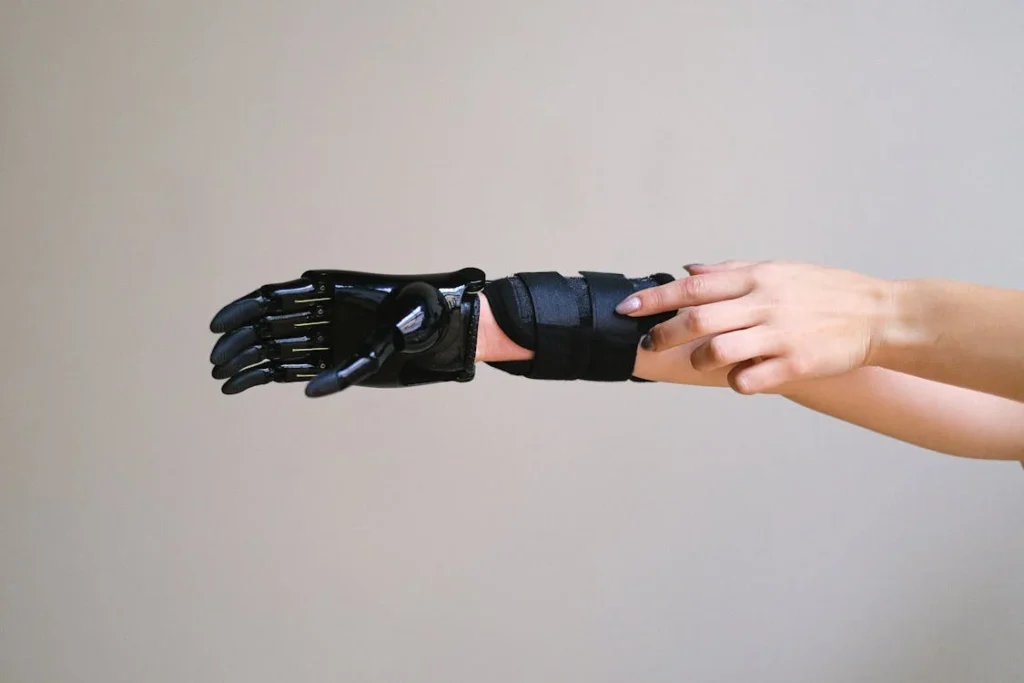
Training the Body and Mind: Adapting to a Bionic Grip
The Learning Curve and Muscle Memory
When someone first receives a bionic grip prosthetic, it’s not just a matter of strapping it on and immediately performing tasks. There’s a learning curve, especially for users who have never used a myoelectric device before.
While the technology is intuitive, the body still needs time to adjust. The brain must rewire itself to associate certain muscle movements with specific actions from the prosthetic. This is a process called motor relearning.
At Robobionics, we ensure every user undergoes a guided training program. It starts with understanding how their specific device reads signals. In the early stages, users practice simple actions—like opening and closing the hand, or rotating the wrist.
As comfort builds, they progress to more complex tasks like writing, typing, or handling tools. Over time, their brain and muscles build a new sense of rhythm. Eventually, these actions become second nature.
This stage is crucial not just for success, but for building confidence. During the training phase, we often hear stories from users like, “I finally managed to hold a spoon today,” or “I shook hands with my father again.” These moments, though small, are deeply meaningful. They signal the return of everyday autonomy.
Occupational Therapy and Long-Term Use
Beyond training in basic movements, occupational therapy helps users reintegrate into their specific lifestyles. A student will practice writing. A cashier may focus on counting money.
A driver might practice handling steering controls. No two journeys are the same, and our therapists tailor the process for each user.
As time goes on, long-term use of bionic grip technology improves not just hand function but also balance and posture. Some users unconsciously lean toward their functional side before using a prosthetic.
Once they regain function on the other side, their body starts realigning. It’s a subtle but powerful change.
We’ve seen improvements in mental health too. People who initially felt reluctant to go outside without a limb now proudly show off their bionic hand. This shift is emotional and visible. They stand straighter, talk more openly, and re-enter social situations with ease.
Customisation: No One-Size-Fits-All Approach
Fitting the Grip to the Person, Not the Other Way Around
Bionic grip is not a product off the shelf. Each device must be carefully fitted to the user’s body and lifestyle. That’s why at Robobionics, we start with a detailed assessment.
We look at the level of limb loss, the strength of residual muscle signals, the user’s daily tasks, and even cultural or religious habits that might affect grip patterns.
For example, someone who frequently cooks will need precise thumb control and durability against heat and water. A student might need more finger dexterity for writing or drawing. A construction worker will require strength, shock resistance, and possibly waterproofing.
We also take into account handedness. If the dominant hand was lost, we work closely to mimic the natural movement patterns that existed before. If the prosthetic is on the non-dominant side, the focus shifts to support and balance.
Aesthetic and Functional Preferences
Some users prefer a natural-looking limb with skin-tone covering, while others love the sleek, futuristic look of exposed mechanics and matte finishes. We offer both.
Younger users, especially teenagers, often choose bold colours or even patterns that reflect their personality. Why should a prosthetic be dull? It should be an extension of who you are.
We also allow software-based customization. Users can fine-tune grip strength, response time, or switch between grip modes using a companion app. In some cases, the prosthetic can be connected to smartphones for firmware updates or troubleshooting—minimising the need for clinic visits.
This level of personalization isn’t just about looks or comfort. It helps increase usage rates. When a user feels the prosthetic is made for them, they’re far more likely to use it every day and truly benefit from it.
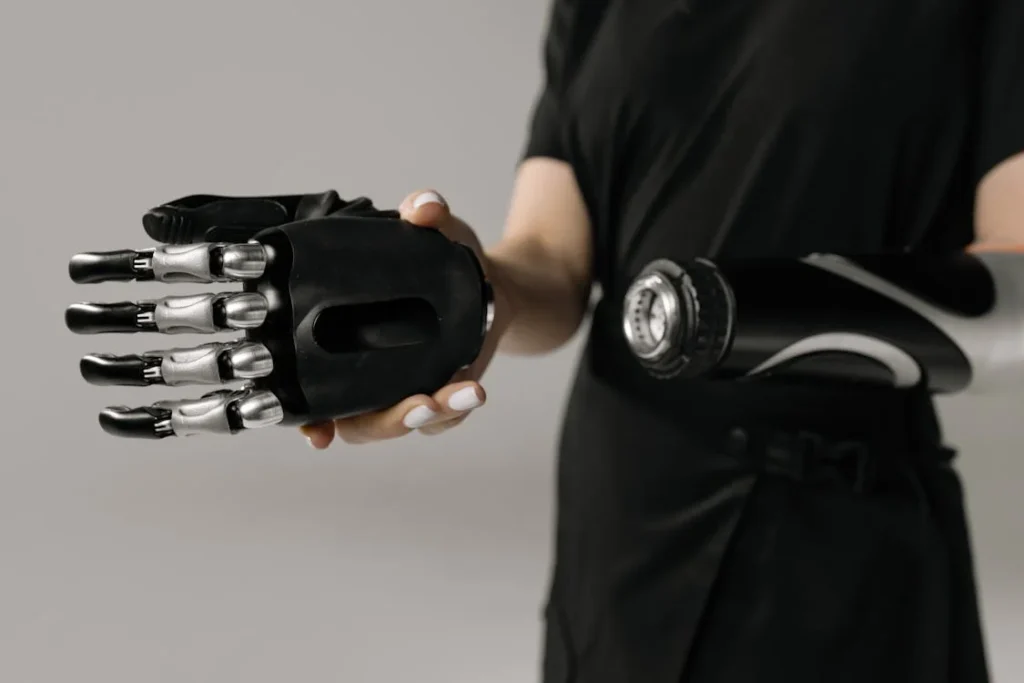
Cultural Perception and Social Acceptance in India
Breaking Stereotypes and Embracing Innovation
India is a country rich in traditions, but it’s also a place where disability often carries stigma. People with limb loss may face not only physical challenges but also social prejudice.
They may be seen as dependent, unlucky, or incapable. This makes integration into society—school, marriage, employment—more difficult than it should be.
Bionic grip technology plays a role in changing this narrative. It shifts the image of a person with a disability from one of “lesser” to one of “empowered.”
The prosthetic itself becomes a symbol of resilience and advancement. When someone walks into a room with a robotic-looking hand that moves with precision and grace, people don’t see a disability. They see capability. They see strength.
We’ve seen this firsthand. Parents who were hesitant to let their daughters go out in public with an amputation now feel proud when they show up wearing a bionic hand. Children in schools no longer shy away or feel ashamed. Employers who once hesitated are now impressed.
At Robobionics, we work with community leaders, NGOs, and school programs to educate people about these changes. Through awareness workshops and live demos, we show that this isn’t a luxury—it’s a necessity. And it’s available right here in India.
Designing for the Indian Context
Climate, Terrain, and Daily Challenges
Prosthetics built in other countries don’t always work well in India. Why? Because our weather, infrastructure, and day-to-day needs are different.
A prosthetic designed for urban use in the West may not handle the heat, dust, or monsoon rains we face here. That’s why local innovation is key.
At Robobionics, we design and test all our devices for Indian conditions. Our bionic grips are resistant to heat and humidity. We use materials that don’t degrade in high-sweat environments. We test against dust and power fluctuation. In short—we make devices that survive India.
We also think about transportation. Many Indians ride two-wheelers or rely on public buses. We design prosthetics that allow users to hold onto handlebars, grip railings, or carry bags comfortably. In rural areas, where electricity might not be constant, we provide portable charging kits.
Affordability Without Sacrificing Quality
Affordability is another huge factor. Imported bionic limbs can cost upwards of ₹10–15 lakhs. That’s out of reach for most Indians. We build the same kind of technology locally, bringing down costs significantly. Our goal is simple: quality must be high, but price must be fair.
We also offer payment plans and work with CSR initiatives and NGOs to sponsor users in financial need. Through partnerships with government health schemes and Ayushman Bharat, we’re making this life-changing technology available to more people every year.
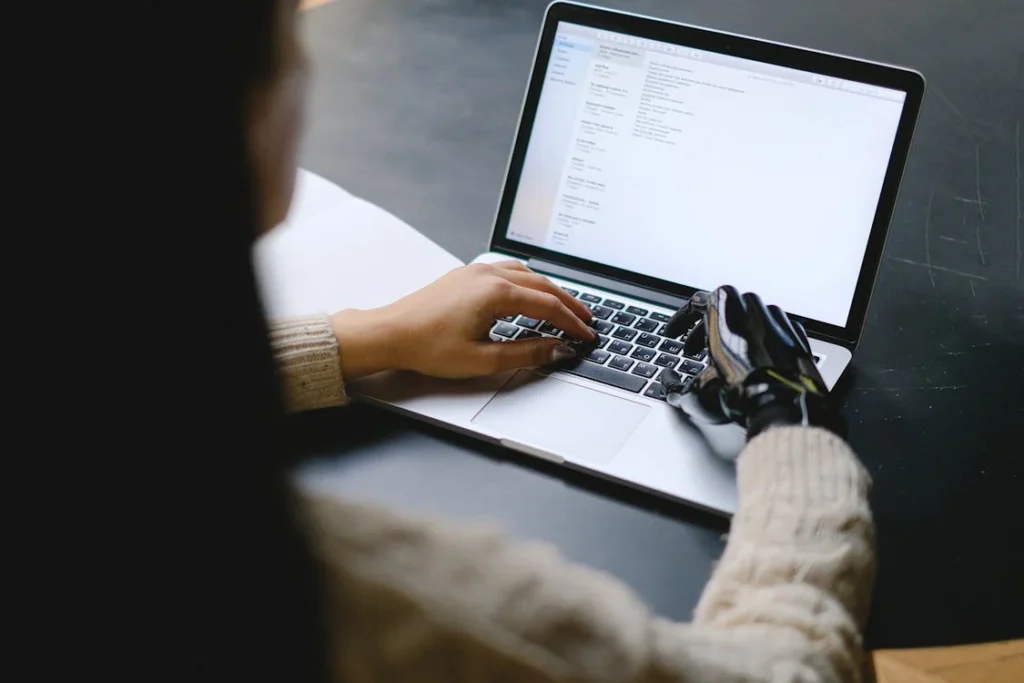
Empowering the Next Generation
Prosthetics for Children and Teens
Children grow fast, which means prosthetics must evolve with them. At Robobionics, we offer adjustable bionic grip systems for kids and teens. These prosthetics are lighter, easier to calibrate, and can be updated or refitted as the child grows.
But functionality is only one side of the story. Kids face unique emotional and social challenges. Bullying, peer pressure, and a lack of understanding can make them self-conscious. That’s why we design bionic hands that aren’t just useful—they’re cool.
We let kids choose colours, LED lights, and design patterns. When they walk into school with a robotic hand that lights up, classmates say “wow” instead of staring silently. That changes everything.
We also train school staff and parents on how to support these children as they adapt. Our therapists work with them on handwriting practice, play-based training, and building confidence.
STEM Education and Tech Careers
Bionic grip doesn’t just empower users—it inspires them. We’ve met young users who, after receiving their prosthetic, developed a keen interest in robotics, engineering, or design.
Some go on to study mechatronics. Others volunteer at our clinics. They want to contribute. They want to innovate. They don’t just want to wear bionic tech—they want to build it.
This is why we’ve partnered with universities and tech incubators to create mentorship programs for young prosthetic users. We believe the next big innovation in bionic tech might just come from someone wearing a bionic hand today.
Conclusion
Bionic grip technology is not just another tool—it’s a turning point. For millions of people in India and around the world, it’s the difference between being dependent and being free. Between hiding your hand and showing it off. Between struggling and thriving.
At Robobionics, we believe that technology should serve humanity—not the other way around. And with bionic grip, we’re finally seeing that vision come true. What once seemed futuristic is now becoming familiar. What once felt impossible is now within reach.
This is more than just a change in mechanics. It’s a change in mindset, in identity, in dignity. When someone puts on a bionic hand and holds a pen, a child’s hand, or a prayer lamp—everything changes.
And this is just the beginning.



